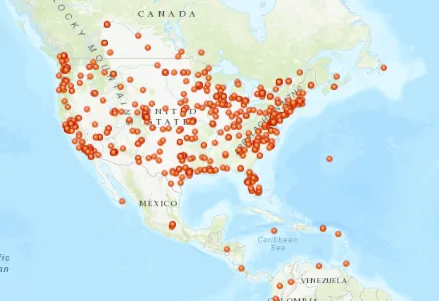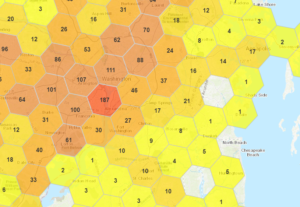HD Maps: Moving Towards a New Safety Standard in Autonomous Driving
Far from being a novelty, car safety has been an important subject since the 19th century. From the invention of the hydraulic brake system to the introduction of seat belts and airbags, the world continues to recognize the need for safety in – and outside of – the car.
With the rise of autonomous driving (AD), there is a new challenge on the horizon. For the first time in history, maps will play a critical role in ensuring the safety of passengers and pedestrians alike. When humans are removed from the driving equation, maps and sensors become the vehicles’ eyes instead.
The implications? Wide and far-reaching.
Their importance? Life-saving.
A new safety model
Classical functional safety is well established in the automotive industry. Until now, compliance with ISO26262, which describes the functional safety of road vehicles, has kept us safe on the road by ensuring that systematic and random hardware and software failures are detected and mitigated as necessary.
But what got us here won’t get us there.
When it comes to the new mobility revolution called autonomous driving, the industry will need to agree on new safety standards regarding maps. One recent development is ISO/PAS 21448, which looks at the safety of the intended functionality.
With 27 years of map-making expertise and maps for automated driving that already power half a million Level 1 and Level 2-enabled automated vehicles on the road today, TomTom is well positioned to contribute to solving these industry challenges.
Making maps AD-proof
Once decision-making moves from the driver to the vehicle, HD maps and sensors take over. Regardless of road conditions, HD maps confirm what the sensors see to keep passengers safe and on the move.
For this reason, HD maps are crucial to the autonomous driving equation. They improve a driver’s – man or machine – field of view through an accurate representation of the road ahead and the neighboring environment. Much like the watchful eye of a drone in the sky, or the collective memory of millions of cars that travelled the same road in the past.
So how do we make maps that are able to handle all challenges thrown at them by an autonomous vehicle?
We start by asking questions.
Three considerations
If maps have an impact on the autonomous vehicle’s safety, then how do we measure their own safety and integrity to ensure optimal performance?
How good should the map be? What metadata should be delivered along with it for a car to reason about the environment, localize itself and plan safe routes?
Below we discuss three considerations.
- Speed
If map data, software and services are to be used in safety critical applications for autonomous driving, then it is paramount to bridge the gap between the moment a road change happens and the time it is reflected in the map.
TomTom today is already able to detect and process map changes in a matter of seconds. We do this through our transactional map-making platform, highly automated map production using machine learning techniques and the application of crowdsourcing for the maintenance and efficiency of our on-demand delivery system.
As map changes are reflected at this incredible speed, the map should also retain its integrity, without any loss or degradation of the map database when it is updated in the user equipment.
Our answer to this challenge is AutoStream, TomTom’s map delivery system. It enables a vehicle to build a horizon for the road ahead by automatically streaming the latest map data from the TomTom cloud.
- Quality
For quality purposes, localization should be accurate at the level required for the application. To ensure the right level of accuracy, mapmakers must exert control over map quality through four operational elements:
- Data collection. Is the data correct?
- Data processing. What controls are in place to ensure quality and prevent errors?
- Data provision/release. How will any loss during data transformations be avoided?
- Data security. How will any external manipulation be prevented?
- Cost
Guaranteeing safety at the level required for autonomous driving is paramount, but it has a steep price. The challenge for mapmakers is to make sure that safety does not come at the cost of affordability for the end user. As additional protocols for data sourcing and production are created and the velocity of engineering teams changes, mapmakers will need to walk the tightrope of cost versus benefits to achieve uncompromising quality at a reasonable price.
A view to the future
TomTom maps power all levels of autonomous driving today. But, before AD reaches market maturity, a new industry safety standard needs to be in place.
What will it look like?
This is the question that TomTom and the industry need to answer.







